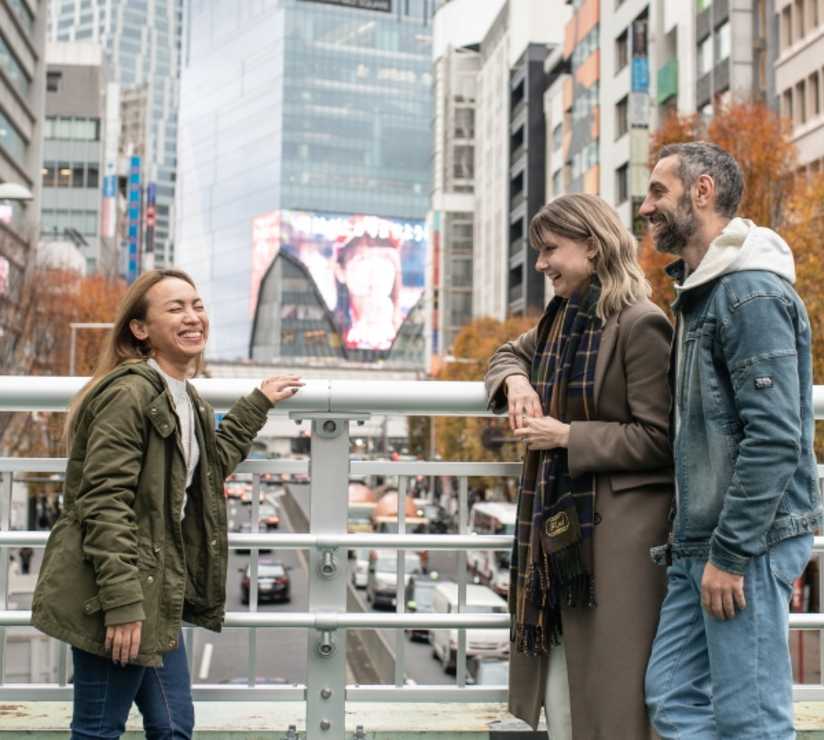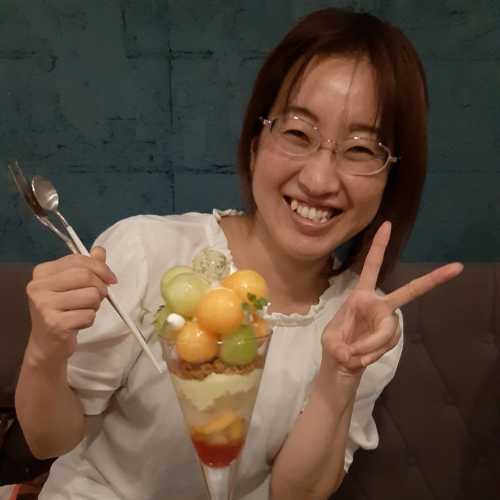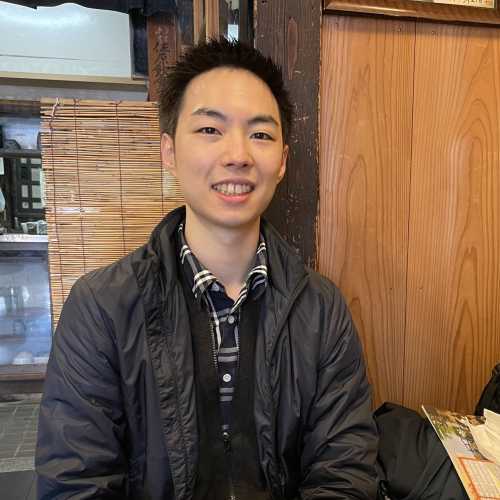Table Of Contents
- The Magic Window Between Seasons
- Where Nature Takes Over the Urban Landscape
- Festival Season That Locals Actually Attend
- When Rain Becomes Part of the Experience
- Food Scene That Shifts with the Season
- Where to Find Tokyo's Secret Natural Spots
- The Live Music Scene Wakes Up
- Day Trip Opportunities That May Makes Perfect
- Practical Tips That Make the Difference
- What Locals Know About May in Tokyo
- Special Events That Define May in Tokyo
- Why May Is Tokyo's Best-Kept Secret
After living here for 28 years, I've watched countless friends plan their Tokyo trip around cherry blossom season or the blazing summer festivals of late June. They're not wrong – those times are spectacular. But May? May is when Japan's capital reveals its most authentic self, before the rainy season kicks in and the tourist crowds reach their peak. It's when you can actually breathe in this city, when the gardens explode with color, and when locals emerge from winter hibernation with an energy that's absolutely infectious.
The Magic Window Between Seasons
May sits in this incredible pocket between spring's cherry blossom frenzy and summer's overwhelming heat. The warm weather hovers around 20-25°C (68-77°F) during the day, dropping to a comfortable 15°C (59°F) at night. Perfect running weather, perfect walking weather, perfect "let's explore every corner of this city" weather.
The rainy season hasn't started yet – that typically begins in early to mid-June – so you're not dodging downpours or carrying an umbrella everywhere. Instead, you get these occasional light showers that cool everything down and make the city smell fresh, like wet concrete mixed with blooming flowers.
Where Nature Takes Over the Urban Landscape
Gardens That Come Alive in May
Tokyo's gardens in May are absolutely ridiculous – in the best possible way. I'm talking about colors so intense they almost hurt your eyes, paths lined with flowers that seem too perfect to be real.
Shinjuku Gyoen National Garden becomes my weekend sanctuary during this time. The azalea section transforms into this sea of pink, red, and white that stretches further than you'd expect in the middle of one of the world's busiest cities. I've brought friends here who've literally stopped walking mid-conversation, completely stunned by the display. The park entrance fee is minimal, but the experience feels priceless.
The wisteria at Kameido Tenjin Shrine creates these purple waterfalls that cascade over wooden trellises. Locals know to visit in late April through early May when the clusters are at their heaviest. The fragrance hits you before you even see the flowers – sweet, almost intoxicating.
Rikugien Garden offers something different entirely. The late spring colors here are more subtle but somehow more sophisticated. The maples are showing their fresh green leaves, creating this canopy that filters sunlight into these dancing patterns on the walking paths. It's where I go when I need to think, when the city energy gets too much.
Looking for a private city experience in Tokyo?
Explore the city with a local who plans a private day just for you; no groups, no scripts.
Festival Season That Locals Actually Attend
May brings festivals that feel authentic rather than performative. These aren't the massive tourist draws – they're celebrations where you'll hear more Japanese than English, where the energy comes from genuine community spirit rather than Instagram opportunities.
Sanno Matsuri Preparations
The Sanno Matsuri happens in mid-June, but May is when you see the preparation energy building around Hie Shrine. Local neighborhoods start organizing, craftsmen work on float repairs, and there's this anticipation buzzing through the districts that will participate.
I love walking through these areas in May because you get to see the behind-the-scenes magic. Elderly men teaching younger generations the traditional techniques, families discussing their roles in the procession, shops starting to display festival goods. It's Tokyo's cultural DNA expressing itself.
Kanda Matsuri Energy
When Kanda Matsuri falls in May (it alternates with Sanno Matsuri yearly), the entire Kanda district transforms. This festival is loud, proud, and completely overwhelming in the best way. Multiple portable shrine processions wind through the city center, carried by teams of locals who've been preparing for months.
The energy is infectious. Even as someone who grew up here, I find myself getting caught up in the crowd excitement, following processions from shrine to shrine, stopping at food stalls that appear seemingly overnight. The portable shrine carriers embody Japanese culture at its most communal and celebratory.
Smaller Shrine Celebrations
Beyond the major festivals, May brings dozens of smaller shrine celebrations across Tokyo. These intimate gatherings offer the most authentic festival experience. Local families dress in traditional clothing, children learn ceremonial dances, and the food stalls serve recipes passed down through generations.
I stumbled onto one near my apartment in Shibuya that happens every May 15th. Maybe thirty families participate, but the dedication is absolute. Grandmothers teaching granddaughters flower arrangement, fathers showing sons how to properly carry offerings. These moments remind me why I never want to leave this city.
Other Entertainment Options Worth a Mention
Three experiences stand out for their unique energy and accessibility. The Short Shorts Film Festival, Asia's largest short film festival, transforms venues across the city into intimate screening rooms where you can discover emerging filmmakers alongside industry professionals – it's a celebration of creativity that perfectly captures Tokyo's artistic spirit.
For music lovers, live music performances happen nightly in everything from tiny basement venues in Shibuya to rooftop bars in Roppongi, offering everything from indie rock to experimental electronic music. Finally, no Tokyo visit is complete without ascending the Tokyo Skytree, where the observation decks provide breathtaking 360-degree views of the sprawling metropolis, especially stunning at sunset when the city transforms into a sea of lights. For more inspiration on how to experience Tokyo at night, check out our recommended guide.
When Rain Becomes Part of the Experience
May gives you a preview of Japan's rainy season without the full commitment. Light showers arrive unexpectedly, last for an hour or two, then disappear, leaving everything sparkling and fresh.
Rainy Day Culture Spots
Mori Art Museum becomes my rainy day escape. The 53rd floor location means you're literally above the clouds during storms, looking down at the weather system moving across the city. The contemporary art exhibitions change regularly, but the view remains consistently spectacular.
Tokyo National Museum offers another perfect rainy day experience. May exhibitions often focus on seasonal themes – flower arrangements, spring scrolls, traditional garden design. The building itself provides shelter while the content connects you to the natural beauty happening outside.
The Tokyo Skytree observation decks transform during light rain. The city appears through these shifting curtains of mist, neon signs reflecting off wet surfaces creating this cyberpunk aesthetic that feels uniquely Tokyo. On clear days, you can even spot Tokyo Tower from here, creating this perfect old-meets-new metropolitan view.
Food Scene That Shifts with the Season
May food culture in Tokyo reflects the weather transition. Grilled foods start appearing on street corners as temperatures warm, but you're not yet dealing with summer's oppressive heat that makes outdoor eating uncomfortable.
Yakitori Under the Stars
Evening temperatures in May are perfect for yakitori stalls and outdoor eating. The narrow alleys around Shinjuku fill with smoke from dozens of grills, workers stopping for quick meals before heading home.
I have this routine where I grab yakitori from a stall near Shibuya station, then eat it walking through the quieter residential streets. The combination of charcoal-grilled chicken, cold beer, and mild evening air creates these perfect moments of urban contentment.
Takoyaki vendors start extending their hours as foot traffic increases. The octopus balls taste better somehow when you're not shivering or sweating while eating them. May provides that comfortable middle ground.
Spring Vegetables and Early Summer Ingredients
Restaurant menus shift during May to incorporate both late spring and early summer ingredients. Bamboo shoots appear in everything from ramen to tempura. Fresh peas show up in rice dishes and traditional sweets.
The department store food floors become treasure hunts for seasonal specialties. Limited-time offerings celebrate the transition between seasons, often combining spring flowers with early summer fruits in ways that sound strange but taste incredible.
What if your day in Tokyo was planned by someone who knows it — and you?
City Unscripted matches you with a local host who creates a private experience based on your interests, not a set route.
Where to Find Tokyo's Secret Natural Spots
Firefly Festival Season Begins
May brings early firefly festival season to several Tokyo locations. Most tourists don't know these spots exist, but locals guard these secrets carefully. Todoroki Valley in Setagaya offers the most accessible firefly viewing, though you need to arrive at dusk and stay very quiet. Some locals call it Hotaru Park during peak season.
The Chinzan-so Garden Hotel grounds host their own firefly festival throughout May and into late June. While it's technically a hotel property, non-guests can visit the garden areas during designated hours. The contrast between fireflies and city lights creates this magical urban-nature hybrid experience that you won't find anywhere else.
Yoyogi Park offers another firefly festival spot that requires local knowledge, plus it's perfect for warm weather picnics during the day. The specific area changes yearly depending on breeding success, but regulars share information through informal networks. It's community science at its most organic.
Hakusan Shrine's Hidden Gem
One of my favorite discoveries is Hakusan Shrine in Bunkyo ward, which transforms into a hydrangea wonderland by late May. The shrine sits in a residential neighborhood that most tourists never explore, but locals know it as one of Tokyo's most photogenic spots during hydrangea season. The temple grounds here offer a preview of what's coming in the full Bunkyo Hydrangea Festival. If you're interested in more off-the-beaten-path destinations in Japan, Fukuoka has its own lesser-known gems to discover.
The Live Music Scene Wakes Up
May weather brings Tokyo's outdoor music scene back to life. Small venues open their doors, creating these indoor-outdoor spaces that let the city energy flow naturally.
Festival Preparation Concerts
Many summer music festivals start announcing lineups and hosting preview concerts in May. These smaller shows happen in intimate venues around Shibuya, Shinjuku, and emerging neighborhoods like Nakameguro.
I caught an incredible show at a rooftop venue in Roppongi last May – maybe 100 people, local bands mixing traditional instruments with electronic music, city lights providing the backdrop. These experiences happen regularly but require local connections or serious research to discover.
Street musicians also emerge from winter hibernation. The areas around major stations fill with performers who disappeared during colder months. The variety is incredible – from traditional shamisen players to experimental electronic artists to singer-songwriters with surprisingly sophisticated setups.
Day Trip Opportunities That May Makes Perfect
Mount Fuji Visibility Season
May offers some of the year's best Mount Fuji viewing conditions. The mountain sheds its winter cloud cover but hasn't yet become obscured by summer haze. Clear days provide stunning views from multiple Tokyo locations.
The Tokyo Metropolitan Government Building's free observation decks offer reliable Fuji viewing on clear May days. I make this trip several times each May, sometimes just to confirm the mountain is still there, sometimes to show visiting friends this iconic view that represents Japan in their minds.
Closer day trips to areas like Kawaguchi-ko become comfortable again after winter's harsh conditions but before summer's oppressive heat. The lakes surrounding Mount Fuji reflect the mountain perfectly on calm May mornings, creating these postcard moments that actually exist in real life.
Nikko Temple Grounds
The two-hour train ride to Nikko becomes pleasant rather than endurance-testing in May weather. The temple complex there offers elaborate architecture set among forests that are transitioning from spring green to deeper summer colors.
What makes May special for Nikko visits is the azalea blooming season. The temple grounds contain thousands of azalea bushes that create this incredible color carpet beneath the ornate buildings. The contrast between human architectural achievement and natural beauty reaches peak intensity during this brief window.
Tip
We match you with the right host, not just any guide.Want to experience the real Tokyo with someone who lives there?
A fully private experience, planned and led by a local host who tailors the day to you
Practical Tips That Make the Difference
Clothing Strategy for Variable Weather
May weather requires layering strategy. Mornings can be cool enough for light jackets, afternoons warm enough for t-shirts, evenings perfect for long sleeves. I pack a light backpack with layers rather than committing to one outfit choice.
Rain preparation means carrying a compact umbrella but not obsessing over it. Convenience stores sell umbrellas everywhere, and locals treat them as semi-disposable items. Don't over-pack rain gear – you'll find what you need when you need it.
What Locals Know About May in Tokyo
The Real Crowd Patterns
May crowds are different from other seasons. You're dealing with Japanese families on Golden Week vacation (early May) but not yet hitting peak international tourist season. The result is busy but manageable, energetic but not overwhelming.
Golden Week (late April through early May) brings domestic tourism peaks, but savvy planning around specific dates can minimize crowd impact. May 3-5 are the biggest domestic travel days, while mid-May often offers the perfect balance of good weather and manageable crowds.
Weather Transition Timing
The rainy season typically begins in early to mid-June, making May the last reliable month for outdoor activities without weather backup plans. Locals schedule hiking trips, outdoor festivals, and garden photography sessions heavily in May for this reason.
Summer humidity arrives gradually, but May still offers comfortable walking distances and extended outdoor time. It's when I do my longest exploration days, knowing that summer will soon require shorter outdoor sessions and more air-conditioned breaks.
Special Events That Define May in Tokyo
Tokyo Pride Parade Celebration
The Tokyo Pride Parade happens in late April or early May, bringing incredible energy to Shibuya and surrounding areas. The celebration has grown significantly in recent years, creating this rainbow explosion of joy that takes over entire neighborhoods. When you visit Tokyo during this time, you're witnessing the city at its most inclusive and vibrant.
What makes the Pride Parade special is how it blends the unique culture Japan embodies with international pride traditions. You'll see everything from traditional drag performance styles to cutting-edge fashion to political activism, all happening simultaneously in the world's most densely populated metropolitan area. If you visit Japan specifically for this event, you'll discover a side of Tokyo that many tourists never experience.
Children's Day Festival Activities
May 5th brings Children's Day celebrations throughout the city. Parks fill with families flying kites, traditional games, and food stalls that cater specifically to families. It's wholesome in a way that shows Tokyo's gentler side.
Koinobori (carp streamers) appear everywhere – hanging from apartment balconies, stretched across rivers, decorating shopping districts. These colorful fish-shaped flags create this temporary festival atmosphere that transforms the urban landscape.
Ready to plan your perfect day in Tokyo?
Start your experienceWhy May Is Tokyo's Best-Kept Secret
After nearly three decades in this city, I'm convinced that May offers the optimal visit Tokyo experience. You get the full range of what makes this place special – incredible food, cultural authenticity, natural beauty, urban energy – without the complications that other seasons bring.
The weather cooperates instead of fighting you. The crowds are manageable but not dead. The city shows both its traditional culture and cutting-edge innovation simultaneously. Gardens explode with color while festivals celebrate community connections that go back generations.
Most importantly, May captures Tokyo in transition, which is when this city reveals its most honest self. Not the perfectly manicured version that appears during cherry blossom season, not the intense festival energy of summer, but this authentic moment when locals are emerging from winter, excited about longer days and outdoor possibilities.
If you're planning to visit Tokyo and want to see the city as locals experience it, May is your answer. The gardens will overwhelm you with beauty, the festivals will sweep you into community celebration, and the warm weather will make you want to explore every corner of this incredible urban maze from the city center to the quieter residential districts.
For those considering extending their stay, you might want to explore things-to-do-in-tokyo-in-june to see how the city transforms as the rainy season begins. Look up our things to do in Tokyo in June page or additionally, our comprehensive Tokyo experiences guide offers deeper insights into year-round activities that showcase the city's unique character.
May in Tokyo isn't just a good time to visit – it's the time when this city shows you exactly why millions of us choose to call it home.
What if your day in Tokyo was planned by someone who knows it — and you?
City Unscripted matches you with a local host who creates a private experience based on your interests, not a set route.
Want to experience the real Tokyo with someone who lives there?
A fully private experience, planned and led by a local host who tailors the day to you











